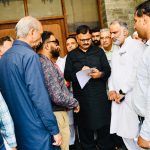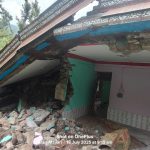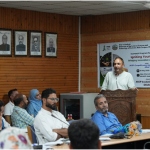Government schools in “Naya Jammu and Kashmir” have become new knowledge hubs and epitomes of learning.
After the abrogation of Article 370, a temporary provision in the Constitution, more and more parents are coming forward to admit their children into state-run schools as these institutions have been revamped during the past three years. After August 5, 2019–when the Centre announced its decision to abrogate J&K’s special status and bifurcate it into two Union Territories–many steps were taken to upgrade the educational institutions in the Himalayan region.
The administration launched innovative plans like “Aao School Chalein” and “Class Campaign” to get the students enrolled in school again. To improve the education standards of rural schools, new hard zones and soft zones were classified, and it was made mandatory for every teacher to serve in both zones for the benefit of students.
Several new methods were employed to make studies interesting in an interactive way.
To ensure the attendance of the teachers, the government introduced a GPS-based system with a simple app that tracks not only attendance but also the teacher’s geographical location, ensuring their presence in the school. The whole set of information is available in real time to all concerned officers.
The Education Department has come up with a feedback app for the performance of teachers. Students from the sixth grade onwards can rate their teachers based on set parameters. Good performers are rewarded, and non-performers are being directed to improve their performance.
Initiatives taken by the government have improved the quality of education in schools across Jammu and Kashmir.
During the past three years, the government has put in all-out efforts to improve the infrastructure to bring the state-run institutions at par with the private schools in the region. Emphasis has been laid on equipping government schools with smart classrooms, tinkering laboratories, sports facilities etc.
In the year 2022, the J&K government as a part of the National Education Policy (NEP) launched a new enrolment drive to bring the children to schools. It led to a 14.5 per cent increase in enrolment compared to 2020-21.
According to the official figures, a total of 1,65,000 students were enrolled in various schools of J&K last year.
The School Education Department launched a survey ‘Talaash’ and through this initiative, around 20 lakh children were surveyed, of which 93,508 students were found out of school or never enrolled.
Mainstreaming of out-of-school children was taken up and many of them who had never gone to school were enrolled.
The education system has been strengthened to help the generation-next of Jammu and Kashmir to scale new heights.
The government has focused on the enrolment of students in pre-primary and primary classes from economically weaker sections of society. The nomadic children, children of far-flung areas, girls and Scheduled Caste and Scheduled Tribe categories are being provided with all possible assistance to attain education and fulfil their dreams and aspirations.
Teachers were sent outside J&K for special training. After their return, they have donned the mantle of master trainers, and mentor teachers, and are working to improve the cognitive skills of the mapped children.
Student & Teacher Engagement for Educational Reinforcement (STEER) was launched in J&K with an aim to focus on the performance of students in academics and to strengthen the learning outcome.
In the budget 2023-24, Rs 1522 crore has been allocated to the education sector. This year the government has embarked on a mission to open 2000 Kindergartens to provide quality pre-primary education.
Work is on to establish drinking water and gender-based toilet facilities in all the schools. Yoga training for all the students is being introduced as part of co-curricular activities.
As many as 188 virtual reality labs and 40 robotic labs and ten residential schools will be set up with a preference for tribal students and students from weaker sections across J&K this year.
Nearly 1000 smart classrooms with LCD and high-speed internet connectivity will come up in government schools in 2023-24.
Just three years ago, not many parents used sent their children to government schools as the former political regimes didn’t pay much attention towards upgrading these institutions and equipping them with modern facilities.
However, in “Naya Jammu and Kashmir” the parents are shifting their children from private to government schools as the quality of education has improved and so has the infrastructure.
Pertinently, till 2019, the schools in Kashmir used to remain shut for one or another reason as the Pakistan-sponsored terrorists and separatists didn’t want the children to study. Frequent shutdown calls, street protests and stone-pelting incidents orchestrated by the agents of the neighbouring country in the Valley kept the students deprived of their basic right to education.
After the scrapping of Article 370 the gun culture has been put to rest, terrorists and separatists, who were responsible for fomenting trouble, have been either put behind bars or eliminated in encounters with the security forces. Their ecosystem and means of sustenance have been destroyed. They are no longer in a position to call shots as the people have rejected them outrightly.
Within three years the entire scenario in Jammu and Kashmir has changed. The government besides curbing terrorism has worked towards inculcating the spirit of nationalism among the children from a very young age. Results are evident as enrollment in schools has increased.
Initiatives like Bharat Darshan tours to make the J&K students aware of the diverse culture of the country are helping the young minds to understand the country’s uniqueness.
The government’s focus on the education sector has proven to be one of the important steps towards the complete integration of Jammu and Kashmir with the Union of India. (ANI)








